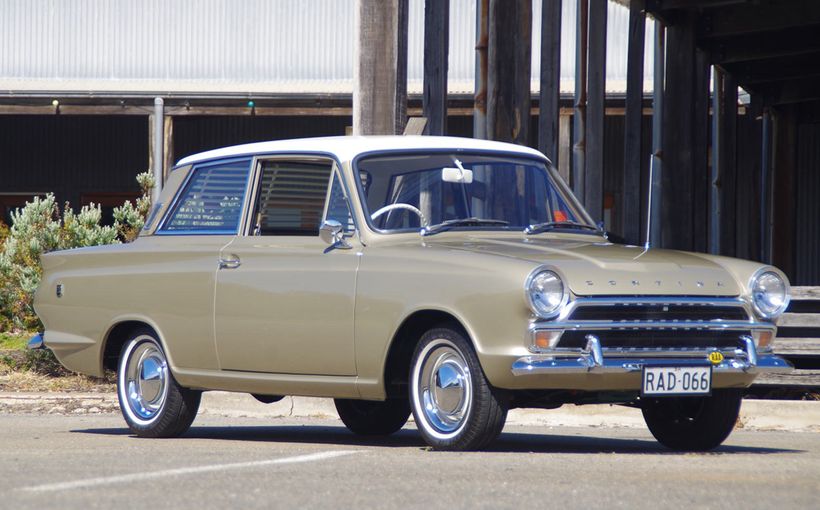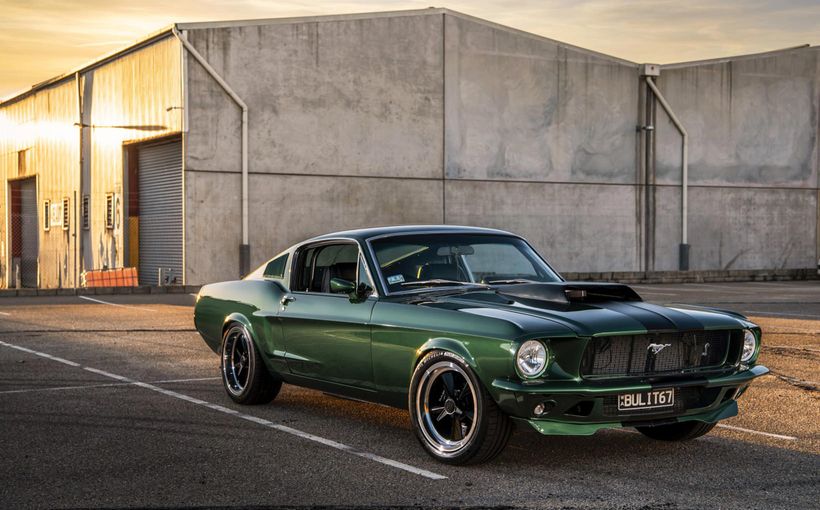XY Falcon: most memorable of all Falcons?

The first shape Falcon ran to four models – XK (1960), XL (1962), XM (1963 and XP (1964). Not only were there four new looks on the same theme within half a decade but there were also numerous running changes. The second shape, launched with the ‘Mustang-bred’ XR in the spring of 1966. When the fourth model, the XY, arrived in November 1970, Australian customers had been offered eight different Falcons in a decade and two months.

By this time the Falcon was a considerably better car than its Holden rival, the ho-hum HG. The bad old days of the first half of the 1960s were all but forgotten but it had taken a triumph of engineering and an equally great feat of engineering to banish memories of weak-kneed XK Falcons failing the Australian suburban roads test. This was down mainly to the efforts of Bill Bourke, who masterminded the You Yangs Durability Trial and the program that installed V8 engines beneath those l-o-n-g XR Falcon bonnets.
The XY was one of the least changed Falcon models in that first decade, but it has always been one of the most celebrated, epitomising what became folklore for many Australian car buyers: always wait for the last of the series before parting with your money.

Essentially, the XY was to the XW what the XP had been to the XM – more of the same but with extra refinements and styling reworked to give a more purposeful, aggressive look.
One area where the Falcon had established a marked advantage over its Holden rivals was engines, and the sixes offered in XY were even bigger. The standard unit now displaced 200 cubic inches and gave 130 brake horsepower.
A formidable new 250 cubic-inch (4.1 litres) engine was added to the options list. Not only did the 250 easily out-power Holden’s optional 186 and 186S engines, but it gave the ‘little’ 253 V8 – introduced during the life of the HT – a run for its money. But there was more. A more highly tuned 2V (twin-venturi carburettor) edition of the new big six was also available within a few months of the XY’s debut. This one delivered 170 horsepower, putting Holden’s 186S with 145 well and truly in the shade. The combination of a dual-throat carburettor and exhaust extractors gave it better breathing, making it an engine more pleasing to enthusiasts because it felt less constricted at high rpm. And the standard version gave wonderfully effortless torque.
For those buyers who weren’t ready to make what seemed like a big step up from a sixpack to a V8, this larger Falcon six must have looked like an ideal alternative. The standard 250 made 155 horsepower compared with 140 from the 221 cubic-inch unit it superseded. It was no coincidence when Falcon brochures promised ‘performance characteristics akin to many V8 engines’; Australia was not the US, and while smaller V8s soon became very popular, the mainstream market remained six-cylinder cars.
The capacity increases – as had been the case on the XW engines – were achieved by stroking rather than boring out the cylinders.

The 302 cubic-inch V8 could not quite match Holden’s homegrown 308, but XY buyers could specify the Cleveland 351. But the highest tune version with four-barrel carburettor was offered only in the flagship GT. Some of the performance deficit between these two versions of the same engine could be made up by specifying the optional dual-exhaust system.
Running its standard single pipe the two-barrel 351 made 250 brake horsepower at 4600 rpm and 355 l/ft of torque at 2600. The compression ratio was 9.7:1. But the GT engine’s figures respectively were 300/5400, 380/3400 and 11:1.
Ford Australia let the old Ford-O-Matic three-speed automatic transmission retire quietly into history with the introduction of the XY which got CruiseoMatic (originally spelt ‘Cruise-O-Matic’) with SelectShift as its sole automatic transmission option.
The Fairmont came standard with this gearbox. Try to imagine, if you will, the contrast in smoothness and driveability between a 186 Premier with three-speed manual transmission and this XY variant. Even the mid-range Futura got the 250 engine and front disc brakes.
As for the fabled ‘Shaker’ GT, it was even more extroverted than its predecessor. To sit in the driver’s seat even when stationary behind this pulsating lump was to feel as if you were somehow an integral part of one lovely wild car. No wonder people fell in love with the XY GT from day one. No wonder this car – both in ‘standard’ GT guise and as the Phase III GTHO – came to symbolise the Aussie supercar era. It’s all too easy to overlook the Monaro GTS 350 but nobody with even the most passing interest in cars and their connection with a small mountain in Bathurst, New South Wales could forget The Shaker.

There had never been – has never been – an Australian car with as much popular appeal as the XY GT. It was the kind of car – don’t laugh! – that could patch up a shaky marriage; just a matter of swapping Shaker for shaky. I know of this happening. The glistening new Falcon XY GT in the garage ushered in a new dreamtime.
Standard equipment included the Cleveland 351 with four-barrel carburettor, low restriction dual-exhaust, ER70 red-wall radials on 14 X 6JJ steel five-slotters, limited-slip diff, heavy duty battery and what Ford Australia marketing people loved to call ‘super duty shock absorbers’.
In wonderful 1970 many of these items were optional equipment on lesser XYs. The special dampers added $15 to your bill. Dual exhausts cost $61. But how about this? For a mere $280 you could option up your Fairmont with the 351 V8.
GT options included the 36-gallon Bathurst long-range tank at $10. Yes, a tenner! Dual racing mirrors were $12. Automatic transmission to dilute the pleasure was $255.
If you didn’t choose to advertise your GT’s Super Roo credentials, you could delete all stripery and decals at no extra cost. Few did.

But many customers wanted the look without the price. They chose the GS Option, which added just $145 to the bill.
The XY GT’s redline was 5500 rpm, at which stage the old Windsor 351 fitted to XW GTs would have become fractious. But a well-tuned four-barrel Cleveland was happy to run up to six grand.
Any old bog stock XY GT was good for a 15.5 second quarter-mile and a top speed of 205 km/h. The Jaguar XJ6 nearly doubled the money but could barely reach 192. The BMW 2800 manual sedan could top 200 and cover the strip in 16.8 but was nowhere near GT-quick in acceleration. As for climbing hills or towing, the XY GT had no four-doored peers.
The XY GT had a more effective suspension. The handling was slightly improved over its predecessor’s but, importantly, the ride gained a new smoothness. Ford Australia’s engineers had studied spring and damper rates and believed they had come up with a great combination. A ride around the block was less comfortable than the same jaunt in a Fairlane, but was more comfortable than in an XW GT.
Interior treatment was little changed but the rear seat got some extra padding (another factor in that ride around the block). A third person could now ride shotgun on the transmission tunnel without getting saddle sore.

Any classic car is more than the sum of its parts. The XY GT was a superbly integrated, purpose-built grand tourer. It oozed charisma. Even if you were the sort of owner who put on his hat and hogged the right lane at 60 km/h on a Sunday, you could still feel Mount Panorama surging through your veins. Come to think of it, you could just sit in the driveway, blip that throttle and delight in the sensations – the thrum of the exhaust and the rhythmical pulsation of the shaker. Aficionados of the Euro posemobiles never knew the half of it.
The nearest thing was the Mercedes-Benz 300SEL 6.3 but you couldn’t buy a manual version and most people couldn’t buy one, full stop.


There was, of course, a kind of rival for the Falcon GT within the same range of cars, namely the ZD Fairlane 500 equipped with the 351 engine. Sadly though – unlike its ZC predecessor – only the lower compression version was offered.
The GT HO Phase III was much upgraded over the standard edition GT (surely an oxymoron!). There was a new, especially toughened crankshaft. Better extractors and a Holley 780 cfm (cubic-foot displacement) liberated more engine rpm with a rev limiter intervening at 6150. Cars bound for Bathurst scored the full blueprinting treatment, had their limiters disconnected and could spin to seven grand. The theoretical V-max was 259 km/h but the fastest Phase III down Conrod in 1971 hit 241.
After such dreaming, summary of the lesser XYs seems dull but must be done. As a 21-year-old university student, I actually found excitement driving an XY Falcon 500 with 250 engine and Cruise-O-Matic. It was a Silver Top taxi and so much better than any HT or HG I can hardly tell you. The refinement was fantastic for the era and that sixpack was just so effortless and smooth.
With the XY the Falcon really came of age. It was such a short step from an entry level variant with the 200 six and three gears on the tree to, say, a Falcon 500 with the 250v and four on the floor.

The wagons benefited considerably from its additional length in the rear (the 111-inch wheelbase still shared with the sedan). And imagine a ute with the 351 V8 engine option and four on the floor.

There was another fascinating XY offering, which amazingly was offered just months after the introduction of the revolutionary Range Rover. Ford Australia built 432 examples of the outlandish but brilliantly capable XY four-wheel drive ute. These very special utes had a seriously high ride height with offroad tyres. They used the 250 six with a three-speed floorshift manual gearbox. The body got extra bracing. Leaf springs were fitted all round. They were built in the Brisbane plant in 1972 and were sold mainly in Queensland and northern NSW. How unfortunate that this vision found expressions in just 432 vehicles – definitely an idea ahead of its time.
But the very existence of the four-wheel-drive XY ute alongside Silver Top taxis and GT HO Phase IIIs reveals the depth of product planning that went into the XY, probably the most memorable Ford Falcon of all.










